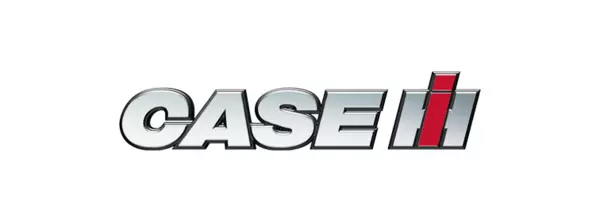Five ways to make existing products more sustainable
Five ways to make existing products more sustainable

Source: blender
Five ways to make existing products more sustainable - Blender - Product Design & Development
By Evan Thomas
February 3, 2022
The hardware space is changing. As part of our process, we regularly assist with the early stage definition and refinement of a product idea, with this we have noticed the prioritisation of sustainable requirements for new products due to market demand or legislation. However, when it comes to existing products that are already on the market, I feel we are falling a little short. It seems to be the majority of sustainable thinking is being focussed on new products, whereas there is a wealth of existing products out there that could easily be tweaked to minimise their impact.
Essentially, we need to teach our old dogs some new tricks.
We’ve compiled 5 common sustainable approaches which can be applied to existing products or the systems that support them. This doesn’t mean we are going right back to the drawing board and throwing out all your previous hard work. The tactic we would employ here is to assess and correct. There will be many optimisations you can make to an existing product without wrecking the budget. Distinguishing which approach is best for you will be a toss-up between value add, time, and budget.
01
FIND COMMON FAILURE POINTS
All products fail, but not all products fail evenly. Prolonging the life cycle of a product is a very effective way of reducing waste. If a product doesn’t fail as often, then there is less need to buy a replacement. We often see products that will have parts that have an expected life 3-4x greater than others within the assembly. When the lesser part fails and the product is discarded, the opportunity for those longer lasting parts to exist is lost.
If you are finding that there is a component in your product that commonly fails, investigate how to resolve this in order to ensure your product’s components have similar life expectancies. In return this will create a longer lasting product and give a more reliable experience to your customer.
Fastmount, an ongoing client of Blender, recently identified a common failure point in an existing textile clip due to user mistreatment in extreme temperatures. If this failed, the product needed expensive specialist skills to remove and replace. We assisted Fastmount with updating the product to have a more reliable and easy to repair solution if breakages ever did occur, prolonging the life of the entire product.
02
REDESIGN FOR DISASSEMBLY
When your product has come to the end of its life, how is it discarded? It may be possible to break down a product into core materials, allowing for easier material separation for recycling. Adhesives and co-molding are near guarantees for the landfill so consider alternate ways to allow for easier separation/removal of parts. If your product is made up from readily recyclable materials, can those be separated easily? If not, this could be a good chance to review what materials you are using in your product and how they are broken down.
You may also need to consider that the “right to repair” movement is growing and that your product may be in the firing line very soon. The right to repair will require disassembly and servicing with common tools by a third party technician and request that replacement components be readily available.
03
OPTIMISE PART COUNT
Take some time to really evaluate your assembly with a design engineer. Often there are ways to turn two or three parts into one. While this may require some additional design time to identify and resolve and will be unique to each product however it is a win-win scenario for both you and the environment. Simplifying your assembly saves on time and cost, while also wiping the need for potentially thousands of parts.
04
ETHICAL MANUFACTURING
Sustainability isn’t just about the product. Social sustainability can be a very effective way to make an impact. Take a moment to look at who manufactures, assembles, ships and sells your product and see if you can identify their quality of life and working conditions. Often offshore components can arrive and we don’t consider how that impacts the supplier and their staff’s livelihood. As a Product Owner you have a great opportunity to leverage fair and ethical conditions for the people who create your goods.
See if they get allotted time off, are subject to hazardous working conditions, or if the company handles their waste responsibly. If you see anything you don’t like, you have the option to find a supplier who suits you. With enough people considering factors such as this, we will collectively all be better off.
If you can’t find any holes internally, consider what holes you can fill externally. Could your business contribute towards a worthy cause such as Trees That Count? Or, join a local effort such as one of the regular beach cleanups and tree planting events by Sustainable Coastlines.
05
REDESIGN PACKAGING
Packaging can be the quickest and most cost effective way to start your sustainability journey. We often see packaging just referring to the finished on-the-shelf box, however before skipping to that step consider what goes on behind the scenes.
Investigate how much packaging is used and why. Chances are you may find some low hanging fruit, for example, requesting a supplier wrap items in groups rather than individually.
Look into your logistics, can you fit more product into a container by reconfiguring how the product is packaged. Or, can you group items from a similar area and ship them together?
When it does come to the final product packaging there is a large range of factors to consider. Keep in mind that while you want to deliver your product safely and provide a great packaging experience, you need to also consider who is receiving your product and select an appropriate packaging method for them.
These are just a few approaches that you can adopt for your existing product in order to reduce the impact your product has. While some are more involved than others in order to complete, this does not mean that they are inherently better. Creating the appropriate path will ultimately come down to your unique situation.
For those looking to begin their road to a more sustainable future, we recommend reaching out to the Sustainable Business Network to keep up to date and utilise their extensive network for support. They have also recently released their Climate Action Toolbox to guide NZ businesses.
Otherwise, if you need a fresh set of eyes. Blender has developed a sustainable discovery workshop which focuses on collaboratively working through several activities. This concludes with identifying and prioritising opportunities to reduce the impact of your new or existing product.

